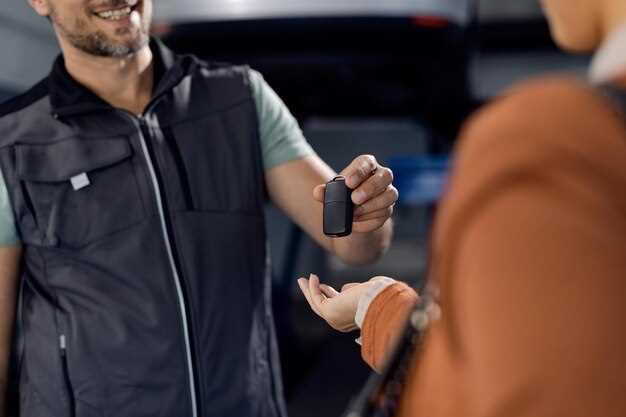
Buying a motorcycle can be an exhilarating experience, but it also comes with significant responsibilities. As a potential buyer’s journey, properly assessing the motorcycle you intend to purchase is critical to ensure you are making a sound investment. A thorough evaluation not only helps you gauge the bike’s condition but also prevents future headaches related to repairs and maintenance.
To streamline the process, creating a checklist can be immensely beneficial. This checklist should cover various aspects of the motorcycle–from the engine’s performance to the aesthetic condition of the frame and bodywork. Each item on your checklist acts as a guide, ensuring that no critical evaluations are overlooked and that you enter the purchasing process with confidence.
By following a comprehensive approach to your motorcycle evaluation, you empower yourself as a buyer to make informed choices. This proactive stance helps you maintain both your budget and your riding enjoyment. As you prepare to hit the road, knowing what to look for will set the foundation for a successful ownership experience.
Inspecting the Motorcycle’s Condition: Key Areas to Examine

When considering a motorcycle purchase, a thorough evaluation of its condition is essential for any buyer. Having a detailed checklist is crucial to identify potential issues. Here are the key areas you should focus on during your inspection:
1. Engine Condition: Start by examining the engine for leaks, unusual noises, or smoke. Check the oil level and quality; dirty or low oil can indicate poor maintenance. Verify the engine number aligns with the documentation.
2. Frame and Body: Inspect the frame for any signs of damage, rust, or bends. A distorted frame can compromise safety and performance. Look for scratches or dents on the bodywork, which may suggest previous accidents.
3. Tires: Check the tread depth and condition of the tires. Uneven wear patterns can indicate alignment issues or suspension problems. Ensure the tires are free from punctures and cracks.
4. brakes: Assess both front and rear brakes. Check the brake pads for wear and the brake fluid for clarity. Test the brake lever and pedal for responsiveness.
5. Suspension: Examine the front forks and rear shocks for leaks and overall performance. Test the suspension by pushing down on the handlebars or seat and observing the rebound.
6. Electrical System: Inspect the wiring for any exposed or frayed connections. Test all lights, including turn signals, headlights, and brake lights. Ensure that the battery is in good condition and reliably holds a charge.
7. Controls and Accessories: Check that all controls, including the throttle, clutch, and gear shifts, operate smoothly. Ensure that any additional features, such as alarms or navigation systems, function correctly.
By thoroughly inspecting these key areas, a buyer can make a well-informed decision and avoid costly surprises post-purchase. Always take your time and, if possible, seek a professional evaluation for added assurance.
Evaluating the Motorcycle’s Documentation and Ownership History

When considering a motorcycle purchase, diligent evaluation of its documentation and ownership history is crucial. A comprehensive checklist should be utilized by the buyer to ensure all necessary aspects are reviewed.
Start by obtaining the motorcycle’s title. Confirm that it is clear, with no liens or outstanding loans attached. This document should match the vehicle identification number (VIN) found on the motorcycle. If the title is branded as “salvage” or “rebuilt,” it may indicate previous serious damage, requiring further inspection.
Next, inquire about the registration documents. Verify that the current registration is up to date and corresponds to the seller’s name. If the motorcycle has been sold multiple times, request the history of ownership. A good track record of previous owners can indicate proper care and maintenance, while a high turnover may raise concerns.
Check for maintenance records. Regular servicing is key to the motorcycle’s longevity. A thorough checklist for the buyer should include oil change logs, part replacements, and any documented repairs. A well-maintained motorcycle will often have a more favorable resale value and reliability.
Lastly, obtain a vehicle history report. This report can reveal whether the motorcycle has been involved in accidents or has undergone any major repairs. It is a valuable tool for assessing the actual condition and history of the motorcycle, ensuring the buyer makes an informed decision before finalizing the purchase.
Test Riding the Motorcycle: What to Focus On
When it comes to evaluating a motorcycle, the test ride is one of the most crucial steps for a buyer. It’s the opportunity to assess how well a bike fits your needs and preferences. Here are the key aspects to consider during your test ride:
Comfort and Ergonomics: Pay attention to your riding position. Make sure the handlebars, seat height, and footpeg placement feel right for your body. A comfortable motorcycle will enhance your riding experience and reduce fatigue over longer distances.
Handling: Notice how the motorcycle responds to your input. Test its maneuverability in various situations, from tight turns to quick lane changes. The bike should feel stable, and the steering should be responsive without being twitchy.
Braking Performance: Test the brakes under different conditions. Apply them lightly and then more firmly to gauge their responsiveness. Adequate stopping power and modulation are vital for safety, especially in emergencies.
Engine Performance: Assess the engine’s smoothness and throttle response. Ensure it accelerates smoothly without hesitation. Listen for any unusual sounds that might indicate mechanical issues.
Suspension: Evaluate how the motorcycle absorbs bumps and potholes. A good suspension system will provide a comfortable ride while maintaining control. Pay attention to how it feels during acceleration and braking.
Sound and Vibration: While subjective, the sound of the engine and the amount of vibration felt through the handlebars and footpegs can affect your overall satisfaction. Ensure the bike aligns with your preferences for noise levels and ride smoothness.
Visibility and Controls: Check the ease of seeing and accessing controls while riding. Make sure your view of the road is unobstructed, and all indicators, switches, and levers are within reach and intuitive to use.
Ultimately, a thorough evaluation during your test ride will help you make an informed decision as a buyer. Take your time, and don’t hesitate to ask questions about anything that doesn’t meet your expectations.




